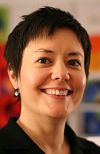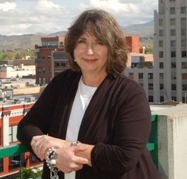
Janet Langsam
The presidential election is just one day away and American entrepreneurship is on the line.
We are told by the candidates that 60% of all jobs come from small businesses. So, I thought I’d check in with Chris Wedge, who is the brains, the heart and the innovator of Blue Sky, an animation studio that produced “Ice Age,” “Robots,” and the soon-to-come “Epic.”
Blue Sky, once a very small business, started out in Elmsford (NY), then located in White Plains, and now has expanded, moving its artists, writers, producers, designers, modelers, riggers, filmmakers, cameramen, photographers, sculptors, composers, lighting and costume designers, editors and other creators to new studios in Greenwich, CT.
With roots still in Westchester, however, (Chris and family reside in Katonah) Wedge has collaborated with the Katonah Museum and Jacob Burns Film Center on a joint exhibition, film and education program about the art of animation. This unique program introduces observers to Blue Sky’s creative process, from initial concept to finished frame through original drawings, storyboards, props, movie clips, and hands-on technology.
Though Blue Sky is a small business, in comparison, say to Twentieth Century Fox Animation, with whom they work, it is also a creative business of which there are some 3,988 in Westchester alone, employing 15,279 people, according to a study by Americans for the Arts.
So, as one left brain person to another, I asked Chris Wedge what it takes to be a creative entrepreneur like himself.
“You just can’t put a limit on possibilities,” he says. ‘You must be open to discovery and surprise. Don’t think too hard. Fun is important. Get out of your own way. Do the work that feels right. The more one investigates, the clearer the potential becomes.”
Read More
























 Pam Rubert
Pam Rubert


 Janet Langsam
Janet Langsam










